|
The word
Philosophy is derived from the combination of two Greek words, “Φιλο”
(philo) which means love, and “Σοφια”
(sophia) which means wisdom. So the basis of today’s talk, “The Philosophy
of Freemasonry” is about the love of the wisdom from the Craft, and it is from
this angle, the wisdom derived from the Craft, that I shall base my analysis.
In academic
circles, philosophy has acquired a slightly different meaning, that of inquiry
into the hidden assumptions, aims and methodology of the subject matter under
discussion. For example, a study of the philosophy of science would involve a
study of the hidden assumptions of science, the aims and methodology of science
and the scientific methods. Initially, I have actually prepared a paper along
that route, but on second thought, for the purpose of this evening’s
discussion, I will stick to the route as defined by the epistemology of the
word, philosophy, love of wisdom, to try and understand the wisdom that’s
embedded in the Craft that so many men in ages past and in the age to come, have
come to love and will continue to love.
Very often when we
are asked by our non-Mason friends what Freemasonry is all about, these are the
common answers we give them:
1. Freemasonry is
a “peculiar system of morality, veiled in allegory and illustrated by
symbols.”
2. The principles
of Freemasonry are, “Brotherly love, Relief and Truth”.
3. Freemasonry
makes a good man better.
4. Freemasonry is
not a religion but it is religious.
We have heard
these four statements so often that they are beginning to sound like clichés,
but are they mere clichés? No, they are not. They actually encapsulate the
principles of the Craft. They bring out the Hero within us.
We all know that
there is no historical evidence of the Hiramic story, it is a mythical story. So
how can our Craft, the principles of which include “Truth”, be based on a
myth? What wisdom does the reenactment of this myth teaches us? And, what’s in
the Craft, the myth of Hiram and the building of the Temple, that has managed to
attract distinguished men to its fold in the last 500 years, in spite of periods
of persecution by the authorities for holding membership in the Craft?
At this point, let
me introduce one of the foremost authorities on mythologies, the late Prof.
Joseph Campbell. Prof. Campbell has written numerous books and articles on mythologies, and
has appeared on PBS (Public Broadcasting System) in the USA giving talks on
mythologies.
If I may be allowed to summarize him, his basic thesis
is this:
-
We all go through the major life events of birth, growth and
reproduction, decline and death.
-
This applies to all mankind irrespective of culture and religion.
-
We all have to deal with the problem of death.
-
Mythologies help us to orientate ourselves in this world and to find
meaning and the inner resonance of life while we are living.
-
There is therefore a commonality between all the world’s mythologies
-
Societies also have rituals to help us re-enact those mythologies in
our own lives so as to enable us to participate in those mythologies.
Campbell’s best-known work is probably “The Hero
with a Thousand Faces” (1), the thousand faces being the myriad figures in the
mythologies of different countries and cultures but all actually pointing to the
same archetypal figure common to all human beings.
This is a quote from “The Hero with a Thousand Faces”:
A
hero ventures forth from the world of common day into a region of supernatural
wonder; fabulous forces are there encountered and a decisive victory is won; the
hero comes back from this mysterious adventure with the power to bestow boons on
his fellow man. (pp. 30).
Concerning rituals, he has this to say:
The
so called rites as passage…are distinguished by formal, and usually very
severe, exercises of severance, whereby the mind is radically cut away from the
attitudes, attachments, and life patterns of the stage being left behind. Then
follows an interval …during which are enacted rituals designed to introduce
the life adventurer to the forms and proper feelings of his new estate…so that
when … he returns, the initiate will be as good as new.
(p. 10).
While Campbell’s book might be a bit heavy going, he
had tremendous influence on a man called Christopher Vogler. Vogler’s regular
daily job was to read the thousands of scripts submitted to Hollywood everyday
and try to predict which script would make a money-spinning movie. After having
been in his job for some time, he noticed something very interesting. The
blockbuster movies in general have the same structure as that of the myths
described by Campbell. He then
wrote a book, which is much more readable than Campbell’s, called “The
Writer’s Journey” (2). In it he summarized the basic structure of
mythologies and then he used a few well-known successful movies to illustrate
how that same structure could be discerned in those movies. The movies he
selected included “The Titanic”, “Casablanca”, “Pulp Fiction”,
“Lion King” and “Star Wars”.
Elsewhere (Appendix I), I have described one of
Kurosawa’s movies in detail. “The Hidden Fortress” was filmed in the
1950’s. It was highly unlikely he knew of Campbell’s “Hero with a Thousand
Faces”, which was published in 1949, and Vogler hasn’t published his book
yet, and yet it displayed the same structure and pattern as described by them,
even though the movie was Japanese. In other words, I think what Campbell and
Vogler described is very real. It is applicable across time and cultures and it
is the intention of my present paper to show how our Craft’s rituals also
follow that structure and therefore why the rituals, to this day, still strike a
resonant chord within our unconscious minds, and why over the centuries, the
Craft has continued to attract men to its fold and impart the wisdom it contains.
According to Campbell and later modified by Vogler, the
basic structure of most mythologies that find resonance in our hearts follows
this format (I have not modified even one word in the following schematic):
Act One
1.1
Ordinary World
1.2 Call to Adventure
1.3 Refusal of the Call
1.4 Meeting with the Mentor
1.5 Crossing the First Threshold
Act Two
2.1
Tests, Allies, Enemies
2.2 Approach to the inmost Cave
2.3 Ordeal
2.4 Reward
Act Three
3.1
The Road Back
3.2 Resurrection
3.3 Return with the Elixir
I shall now analyze our First Degree Ritual using the
Structure of Mythologies as expounded by Campbell and Vogler.
Act One
1.1
Ordinary World: the outside word, the
profane world.
1.2 Call to Adventure: change of clothing and putting on of the other paraphernalia.
1.3 Refusal of the Call: waiting in the Adjoining Room
1.4 Meeting with the Mentor: The Junior Deacon comes, (he guides the candidate,
therefore he is the mentor).
1.5 Crossing the First Threshold:
Entering
the Temple after being Challenged
Act Two
2.1
Tests, Allies, Enemies: challenged by
the JW and SW, test of the Tongue of Good
Report. Trial questions by the WM.
2.2 Approach to the inmost Cave: Approach to WM pedestal
2.3 Ordeal: the
obligations (ancient penalties), p. at the n.l.b., cable tow.
2.4 Reward: Grip
and Token
Act Three
3.1
The Road Back: leaving the Lodge.
3.2 Resurrection: back
to the Lodge, putting on the badge, new status, rebirth as a Mason
3.3 Return with the Elixir: leaving the lodge as a Mason having seen the Light.
Now let us do the same analysis with the Third Degree
Act One
1.1
Ordinary World: the outside world, the
profane world
1.2 Call to Adventure: opening of the Lodge in the Second Degree
1.3 Refusal of the Call: just sitting there waiting for the SD
1.4 Meeting with the Mentor: the SD comes
1.5 Crossing the First Threshold: approach the center of the Lodge to be tested
Act Two
2.1
Tests, Allies, Enemies: answering the
tests questions with the SD as allies.
2.2 Approach to the inmost Cave: lodge in darkness
2.3 Ordeal: knocks
by JW and SW
Act Three
3.2 Resurrection: k.d.
and r.
2.4 Reward: s/s
of a Master Mason, the FPOF and the Master’s Word
3.3 Return with the Elixir: Leaving the Lodge as a Master Mason and living in the Light.
If you ask Masons who have gone through all three
degrees, which is the one that is the least satisfying, I think the majority
would say the Second Degree. Why?
If you try and analyze the Second Degree using
Vogler’s paradigm, you’d find it doesn’t fit well. In addition, there is
no dramatic death/resurrection element. Is that the reason?
When I use the phrase “Death and Resurrection”, it
does not actually have to be literal death and literal resurrection. It means
saying goodbye to an old way of living and coming into a new way of living or a
new way of understanding. The movie, “The Hidden Fortress”, by Kurosawa
illustrates this point very well (Appendix I). At the end of the movie, the
friends died to their old ways of behavior and became better persons. For those
of you who have seen the movie “The Last Samurai” starring Ken Watanabe and
Tom Cruise, at the end of the movie,
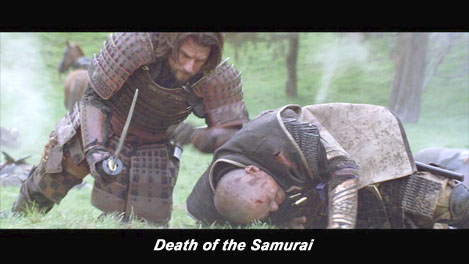
Samurai Ken Watanabe died, but his spirit resurrected in Tom Cruise.
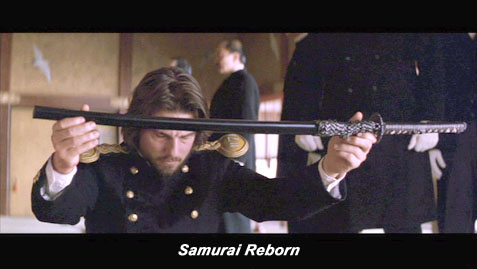
There is another way of looking at the Three Degrees.
Instead of analyzing the three degrees separately, one can look at all three as
three parts of the same structure. In which case, the First Degree would
correspond to “Act One” of Christopher Vogler, the Second Degree to “Act
Two” and the Third Degree to “Act Three”. Like fractals, this analysis is
also valid. Remember, Act One is about entering the Threshold, in this case, the
meaning of entering the Threshold is gaining an entrance into the world of
Freemasonry by becoming an Entered Apprentice. Act Two is about approaching the
Inner Cave. As a Fellow Craft, one is now more deeply entrenched and is
approaching the inner secrets of the Craft. Finally, Act Three is about Death
and Resurrection. Need I say more?
One may now ask what is Mythology?
In the words of
Joseph Campbell, mythology is an organized collection of stories (i.e., "myths")
by which we explain our beliefs and our history. Beneath the story-lines, myths
usually confront major issues such as the origin of humanity and its traditions,
and the way in which the natural and human worlds function on a profound,
universal level.
According
to Campbell, mythology serves many purposes. Applying his analysis to the myths
re-enacted in our rituals, one might come to the following conclusions:
-
Myths grant
continuity and stability to a culture. They foster a shared set of
perspectives, values, history -- and literature, in the stories themselves.
The Hiram myth certainly grants continuity and stability to the Craft.
Throughout the world, we are united in enacting this myth.
-
Myths present
guidelines for living. When myths tell about the activities and attitudes of
heroes, the moral tone implies society's expectations for our own behaviors
and standards. In myths, we see archetypal situations and some of the
options can be selected in those situations; we also perceive the rewards
and other consequences which resulted from those selections. Definitely, in
the Hiram myth, it presents us with the moral ideal of fidelity and secrecy.
-
Myths give
meaning to life. We transcend our common life into a world in which heroes
lived, and we can believe that our daily actions are part of some grand
scheme. In our difficulties, the pain is more bearable because we believe
that the trials have meaning; we are suffering for a bigger cause rather
than being battered randomly. And when we read that a particular hero
experienced something which we are now enduring -- perhaps a struggle
against betraying a friend, a struggle against being uncharitable, -- we can
feel that our own struggle might have a similar cosmic or archetypal
significance, though on a smaller scale.
-
Myths explain
the unexplainable.
-
Myths offer
role models. The fidelity of Hiram, even unto death definitely offers us a
role model.
Christopher Vogler
notes that his description of the hero's journey has provided many readers with
"some useful metaphor or way of looking at things, some language or
principle that defines their problem and suggests a way out of it. They
recognize their own problems in the ordeals of the mythic and literary heroes,
and are reassured by the stories that give them abundant, time-tested strategies
for survival, success, and happiness." In the same way, the work of Joseph
Campbell has provided Vogler with a similar insight and inspiration.
Ultimately, the
mythic adventure is not mythic at all: the true hero's journey is the
individual's conduct of his own life. Our very own lives, our existence, are the
ultimate call to adventure. It is a
sacred journey that can only be undertaken once for each of us.
“Our
greatest task is the writing of our own stories. These stories are not written
on any ordinary paper. They are inscribed on the precious, never-to-be-replaced
parchment of our own lives. “ (from Joseph Campbell).
Knowledge of the
hero's journey will help us to live that story well. The Hiramic myth, as
reenacted in the Craft’s ceremonies, though may not be historical events, are
nevertheless psychological and spiritual truth. They therefore have the power to
give us the wisdom of the ages and make manifest that hero in all of us, and
make us better men.
That hero’s
journey involves Brotherly Love, Charity, Fidelity, Trust and Truth. Love,
Charity, Fidelity and Trust are all written in the fabric of life. Axelrod (3),
in his classic computer experiment using that branch of mathematics known as
Games Theory in general, and “The Prisoner’s Dilemma” in particular, and
Ernst Fehr and Simon Gächter in their paper on “Public Goods Game” (4) have
demonstrated irrefutably that just as e=mc² and Newton’s Laws of Gravity are
written in the very fabric of our physical world, Charity, Fidelity and Trust
are written in the laws of social evolution. (Appendix II and III). Just as it
will cost us our very lives if we try to defy the Law of Gravity, so it will
cost us our very soul, the soul of the hero within each of us, if we try and
defy the Law of social evolution in the form of Brotherly Love, Charity,
Fidelity, Trust and Truth.
The journey through the Three Degrees is that of a
Hero’s journey, from darkness to light. The structure of the three degrees’
ceremonies is such that it corresponds to the structure of the Hero’s Journey
as described by Joseph Campbell.
I will therefore end this talk with a song by Mariah
Carey: The Hero.
There's
a hero If you look inside your heart You don't have to be afraid Of what you are
There's an answer
If
you reach into your soul And the sorrow that you know Will melt away
And
then a hero comes along With the strength to carry on And you cast your fears
aside And you know you can survive So when you feel like hope is gone Look
inside you and be strong And you'll finally see the truth That a hero lies in
you
It's
a long road When you face the world alone No one reaches out a hand For you to
hold You can find love If you search within yourself And the emptiness you felt
Will disappear
And
then a hero comes along With the strength to carry on And you cast your fears
aside And you know you can survive So when you feel like hope is gone Look
inside you and be strong And you'll finally see the truth That a hero lies in
you
Lord
knows Dreams are hard to follow But don't let anyone Tear them away Hold on
There will be tomorrow In time You'll find the way
And
then a hero comes along With the strength to carry on And you cast your fears
aside And you know you can survive So when you feel like hope is gone Look
inside you and be strong And you'll finally see the truth That a hero lies in
you
If
we let the Hero inside us come out, as when we went through the Degree
Ceremonies, we are all heroes in our lives.
Finally, I would like to quote again from Joseph
Campbell (5) to explain why our ceremonies must remain secret to the outside
world. This beautiful work is from a wall in Pompeii.
This young man is being initiated. There is an initiator and an assistant. The
boy is told, “Look in this bowl, it is a metal bowl, and you will see your own
face, your own true face.”
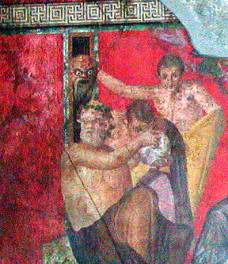
The bowl is of
such concavity inside that what he is going to see is not his own face at all
but the face of old age held behind him. And isn’t that a shock!! He is being
introduced to the mythology of the “long body”, the whole body of your life
from birth to death. And so, again, we have the mythology of the long body. Now
suppose one of his friends, before he went in there, said, “Now look, you see,
this guy, he is going to tell you you’re going to see your own face. You’re
not. He’s got another fellow there and he’s holding this face of an old man.”
There would be no initiation. There would be no shock. That’s why mysteries
have to be secret; because what is experienced is experienced for the first
time.
Applying this
analogy to the Masonic Rituals, this is the best explanation I have come across
of why our ceremonies has to remain a secret. They are initiation ceremonies.
Our Craft’s rituals are that of a Hero’s journey. Our
own lives, no matter how insignificant other people might think they are, are
Hero’s journeys. The best way to help mankind is through the
perfection of oneself, to bring out that Hero in oneself. The Rituals of our
Craft serve to bring that Hero out of each of us, a hero of Goodness and
Compassion, of Uprightness and Charity, of Fidelity and Trust.
References:
1. Joseph Campbell:
“Heroes with a Thousand Faces”, Princeton University Press, 1949.
2. Christopher
Vogler: “The Writer’s Journey: Mythic Structure for Writers”,
Studio City, CA:
Michael Wiese Productions, 1998.
3. Robert Axelrod :”The Evolution of
Cooperation”, New York, Basic Book, 1984.
4. Ernst Fehr and
Simon Gächter: “Cooperation and
Punishment in Public Goods Experiments”, American Economic Review 90:980-94,
2000.
5. Joseph Campbell:
“Transformation of Myth through Time”, Harper
Perennial, 1990 pp 22-23.
Postscript
After this paper
was presented, there appeared an article in the Proceedings of the National
Academy of Sciences of the United Sates, Vol 103, No. 42 pp 15623-15628, October
17, 2006 by Jorge Moll , Frank Krueger
et al, “Human
fronto–mesolimbic networks guide decisions about charitable donation” in
which the authors demonstrated a neuronal basis for the joy that one feels when
one has done some charitable act. For this neuronal capacity to have evolved in
the brains of Homo sapiens, it must mean that charitable acts are aids to the
survival of the species. This finding therefore supports the argument that
Axelrod has demonstrated using Games Theory for the mathematical basis for
charitable acts. This therefore again lends support to the idea that the great
fundamentals of the Craft are written in the very fabric of the universe
APPENDIX I
The Hidden Fortress by Akira Kurosawa
Set in medieval Japan, the movie’s opening scene showed two country bumpkins dressed in tattered clothes running through a desolate place cursing and swearing at each other. The army to which they belonged had been defeated and they were running for their lives having just escaped from a POW camp.
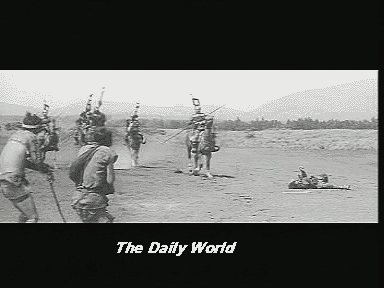
Suddenly, they saw a group of horsemen running down another man dressed as a samurai. That’s the opening scene.
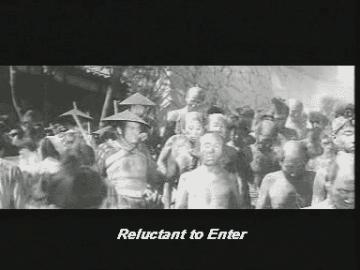
As the story unfolded, they were caught by the enemy soldiers and became POW again, working as slave labor in a castle trying to find the gold left by the defeated Princess.
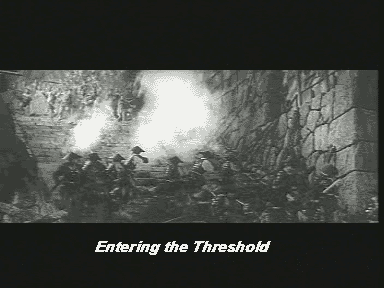
There was a prison revolt and they escaped. They swore eternal brotherhood between each other.
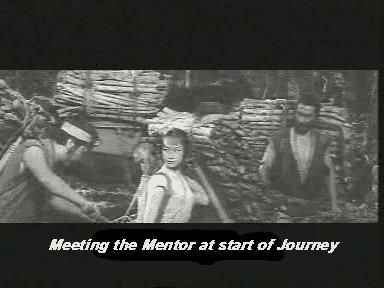
They then came across a Samurai who enticed them with promise of gold to help him and a lady carry some gold hidden in twigs to another country. That lady was the Princess of the defeated country.
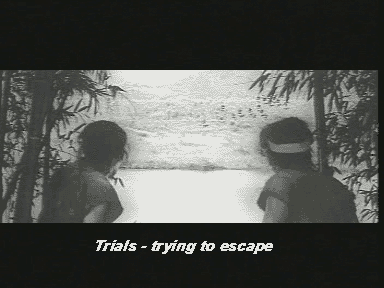
On the way, they tried to escape with the gold a few times, but always failed as the enemy soldiers were everywhere hunting for the Princess.
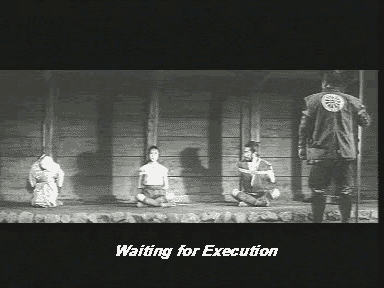
Finally, they were all caught and were about to be executed when the officer-in-charge of the enemy contingent realized he had once been saved by that Samurai. He let them go, and they made it to a friendly country.
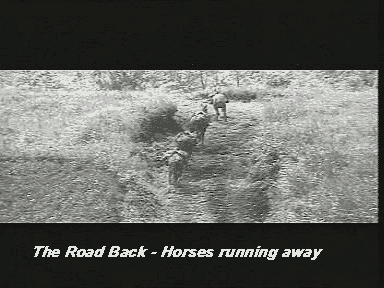
In that confusion, the horses carrying the gold ran away, but were subsequently found by the two country bumpkins who attempted to take the loot.
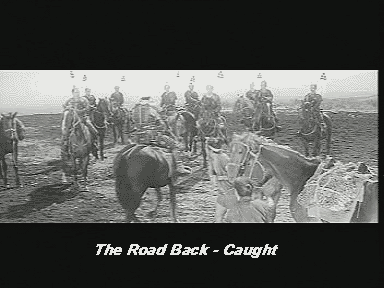
But they were arrested by the soldiers of the Princess and brought before her.
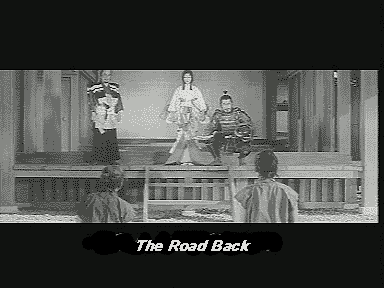
Instead of punishing them, the Princess thanked them for helping her carry the gold to the friendly country and she set them free. She also gave them a piece of gold to be shared between the two.
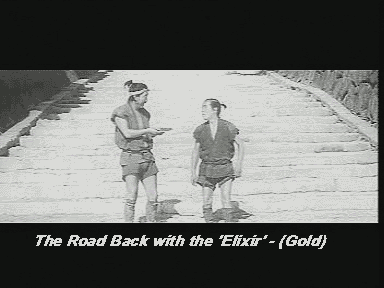
The last scene showed the two leaving the castle, one trying to pass that piece of gold to the other, and the other saying, “Never mind, I trust you. I know you will divide that piece of gold equally.” They have finally become real friends and trusted each other. They have finally stopped being selfish and self-centered, only caring about themselves.
According to Campbell and later modified by Vogler, the
basic structure of most mythologies that find resonance in our hearts follows
this format:
Act One
1.1
Ordinary World
1.2 Call to Adventure
1.3 Refusal of the Call
1.4 Meeting with the Mentor
1.5 Crossing the First Threshold
Act Two
2.1
Tests, Allies, Enemies
2.2 Approach to the inmost Cave
2.3 Ordeal
2.4 Reward
Act Three
3.1
The Road Back
3.2 Resurrection
3.3 Return with the Elixir
I shall now analyze the movie “The Hidden Castle”
and the First Degree Ritual using the Structure of Mythologies as expounded by
Campbell and Vogler.
|
1.1 Ordinary World
|
|
Hidden Fortress
|
First Degree Ritual
|
|
World
of Constant Warfare
|
The
outside world
|
|
The
two friends trying to survive
|
The
profane world
|
|
1.2 Call to Adventure
|
|
Hidden Fortress
|
First Degree Ritual
|
|
Caught
as POW
|
Putting
on various paraphernalia
|
|
Set
to work to recover the gold
|
|
|
1.3 Refusal of the Call
|
|
Hidden Fortress
|
First Degree Ritual
|
|
Escape
from the Castle
|
Waiting
in the Adjoining Room
|
|
1.4 Meeting the Mentor
|
|
Hidden Fortress
|
First Degree Ritual
|
|
Meeting
the Samurai General
|
The
Junior Deacon comes
|
|
1.5 Crossing the First
Threshold
|
|
Hidden Fortress
|
First Degree Ritual
|
|
Reaching
the Hideout where the Gold is hidden. (The Hidden Fortress of the Film’s
Name)
|
Entering the Temple after being Challenged
|
|
2.1 Tests, Allies and Enemies
|
|
Hidden Fortress
|
First Degree Ritual
|
|
Meeting
various people on the way
|
Challenged
by the JW and SW
|
|
Meeting
enemy soldiers on the way
|
Test
of the Tongue of Good report
|
|
|
Trial
questions by the Wm
|
|
2.2 Approach to the Innermost
Cave
|
|
Hidden Fortress
|
First Degree Ritual
|
|
Approaching
the Final Frontier
|
Approach
to WM pedestal
|
|
2.3 Ordeal
|
|
Hidden Fortress
|
First Degree Ritual
|
|
The
Final Battle
|
The
obligations (ancient penalties)
|
|
Being
defeated
|
C.
at the n. l. b.
|
|
Caught
again and awaiting execution
|
C.T.
|
|
2.4 Rewards
|
|
Hidden Fortress
|
First Degree Ritual
|
|
Escape
|
p.g.
and p.w.
|
|
Discovery
of the Gold still with the horses
|
|
|
3.1 The Road Back
|
|
Hidden Fortress
|
First Degree Ritual
|
|
Traveling
in the Ally Country
|
Leaving
the Lodge
|
|
Going
Home
|
|
|
3.2 Death and Resurrection
|
|
Hidden Fortress
|
First Degree Ritual
|
|
Being
caught again
|
Back
into the Lodge
|
|
Imprisoned
and facing Execution
|
Putting
on the badge, new status, rebirth
|
|
3.3 Return with the Elixir
|
|
Hidden Fortress
|
First Degree Ritual
|
|
Trust
in each other as friends
|
Leaving
the Lodge as a Mason
|
|
Finally
realized the meaning of friendship
|
Living
in the Light
|
APPENDIX
II
Prisoner’s
Dilemma
Imagine two men
caught by the authorities and accused of having done something against the law.
The authorities have no proof, only a strong suspicion against them, and needs
each of them to stand witness against the other person in order to convict them.
In order to do that, the two are put in separate rooms, with no means of
communication between the two of them. To each, the following scenario is given:
1. If you assist
the state and be a witness against your partner, your partner will get ten years
in jail.
2. If you assist
the state and be a witness against your partner, and your partner accuses you of
the crime, because you have turned state witness, you will get only 5 years.
3. If you don’t
assist the state and refuse to be a witness against your partner, whereas your
partner turns state witness and accuses you of the crime, you will get 10 years
and your partner will go free.
4. Unspoken of
course is, if both you and your partner refuse to co-operate with the state,
then neither of you will go to jail.
This can be
summarized as a table of jail-terms:
|
|
He
betrays you
|
He
remains loyal
|
|
You betray
him
|
5 years
|
5
years
|
0 year
|
10
years
|
|
You remain
loyal
|
10 years
|
0
year
|
0 year
|
0
year
|
Given this
scenario what would you do? If you choose to remain, loyal, the best outcome is
0 year in jail for you, but the worst outcome, that of having 10 years in jail
is also a possibility. However, if you chose to betray him, the best outcome is
also 0 year in jail for you, but now, the worst outcome is only 5 years in year.
Logically, you should choose to betray him. Logically, he would follow the same
reasoning, and the state would get what it has wanted, a conviction of both of
you. However, if only you can trust him and he can trust you to a similar degree,
then both of you could have got free!
Robert Axelrod (The Evolution of Cooperation, New York, Basic Book, 1984), in a
classic study, posed this problem to a group of top computer scientists and
mathematicians. He asked them to write a program to play this “Prisoners’
Dilemma Game”. Each program would meet another program, and depending on
whether it took the position of being loyal or betrayal, and at the same time,
what was the other program’s position, points would be awarded. This is the
payoffs table:
|
|
He
betrays you
|
He
remains loyal
|
|
You betray
him
|
1 pt.
|
1
pt.
|
5 pts.
|
0
pt.
|
|
You remain
loyal
|
0 pt.
|
5
pts.
|
3 pts.
|
3
pts.
|
The programs would
interact with the other competitors’ programs repeatedly over hundreds of
thousands of rounds, and the winner at the end would be the computer program
that has accumulated the largest number of points. Again, you will notice, if
you betray the other person, you will at worse, get 1 point, but with a
possibility of getting 5 points. On the other hand, you choose to be loyal to
the other person, at most, you will get 3 points, and at worse, nothing. In
terms of both the maximum points you can gain by remaining loyal, and the
minimum point you can get by remaining loyal, they are both less than what you
can get by betraying him.
The outcome of the
experiment defies our intuition. At first blush, as explained above, the best
strategy seems to be that of being selfish all the time, ie, betray the other
person and adopt a “me-first” position. As it turned out, the winner was a
program called “Tit-for-tat”. The strategy “Tit-for-tat” adopted was a
very simple one. On first encounter with another program, it will adopt a
‘loyal co-operative” mode. Of course, if the other program has adopted a
“betrayal” mode, “Tit-for-tat” will lose out. However, if the other
program has adopted a “loyal co-operative” mode, both will win. Now, on the
next encounter with the same program, “Tit-for-tat’s” response was
dependent on the response of the other program on their first encounter. If at
their first meeting, the other program has been “loyal and co-operative”,
“Tit-for-tat” will also be “loyal and co-operative”, however, if at that
first meeting, the other program was in a “betrayal” mode, “Tit-for-tat”
will now adopt a “betrayal” mode. That
is the reason for it being named, “Tit-for-tat”.
Axelrod couldn’t
believe the result. Having published the results, he called for a second round
of the same competition. Now, all the participants in the second round had known
of the result of the first round and of the strategy of “Tit-for-tat” and
all kinds of strategies were then tried. What was the result of the second
round? “Tit-for-tat” was still the winner.
The lesson for the
social evolutionists is very clear. Given the nature of the Darwinian world,
there is a place for co-operation and charity. We have to help each other. By
helping each other, we survive better. Because just as e=mc² is written into
the laws of nature and governs our very physical universe, the law of
co-operation, of charity is written into the very fabric of life.
Please note
however that “Tit-for-tat” wins only in a situation where the game is played
over and over and over. It won’t win if it’s a once off game. In other words,
the analogy in real life is if there is eternity, trust, love and charity will
be the best policies. The requirement for a Supreme Being is not because without
Him, there is no morality. It is because morality, in the form of love and
charity, is built into the very fabric of life itself, and He, is the very
fabric of life itself.
If one thinks
deeper on Axelrod’s experiment, it is very obvious it applies to a one on one
encounter. What happens when the encounter is many and varied? What happens when
our encounter with other human beings is one on one, but that human being can
report on our encounter with him to others?
APPENDIX
III
Public-Goods
Game
This is a game
devised by Ernst Fehr and Simon Gächter (“Cooperation and Punishment in
Public Goods Experiments”, American Economic Review 90:980-94, 2000).
Let me describe
that game in the using the words of James Surowiecki in his book “The
Wisdom of Crowds, p. 172” (Abacus, 2005. ISBN 0 349 11707 1)
“There are four
people in a group. Each has twenty tokens, and the game lasts four rounds. On
each round, a player can either contribute tokens to the public pot, or keep
them for himself. If a player invests a token, it costs him money. He invests
one token, and he personally earns only 0.4 tokens. But every other member in
the group gets 0.4 tokens, too. So the group as a whole gets 1.6 tokens for
every one that’s invested. The point is this: if everyone keep their money and
invests nothing, they each walk away with twenty token. If everyone invests all
their money, they each walk away with 32 tokens. The catch, of course, is that
the smartest strategy ordinarily will be to invest nothing yourself and simply
free ride off everyone else’s contributions. But if everyone does that, there
will be no contributions.”
Ernst
Fehr and Simon Gächter found that in general, there are 25% free riders, a few
altruists, but the majority are conditional consenters, that is they will
contribute if other people contributes, and they will become free riders if the
majority does not contribute.
| ![]() News Feed |
News Feed |  Subscribe News by Email
Subscribe News by Email